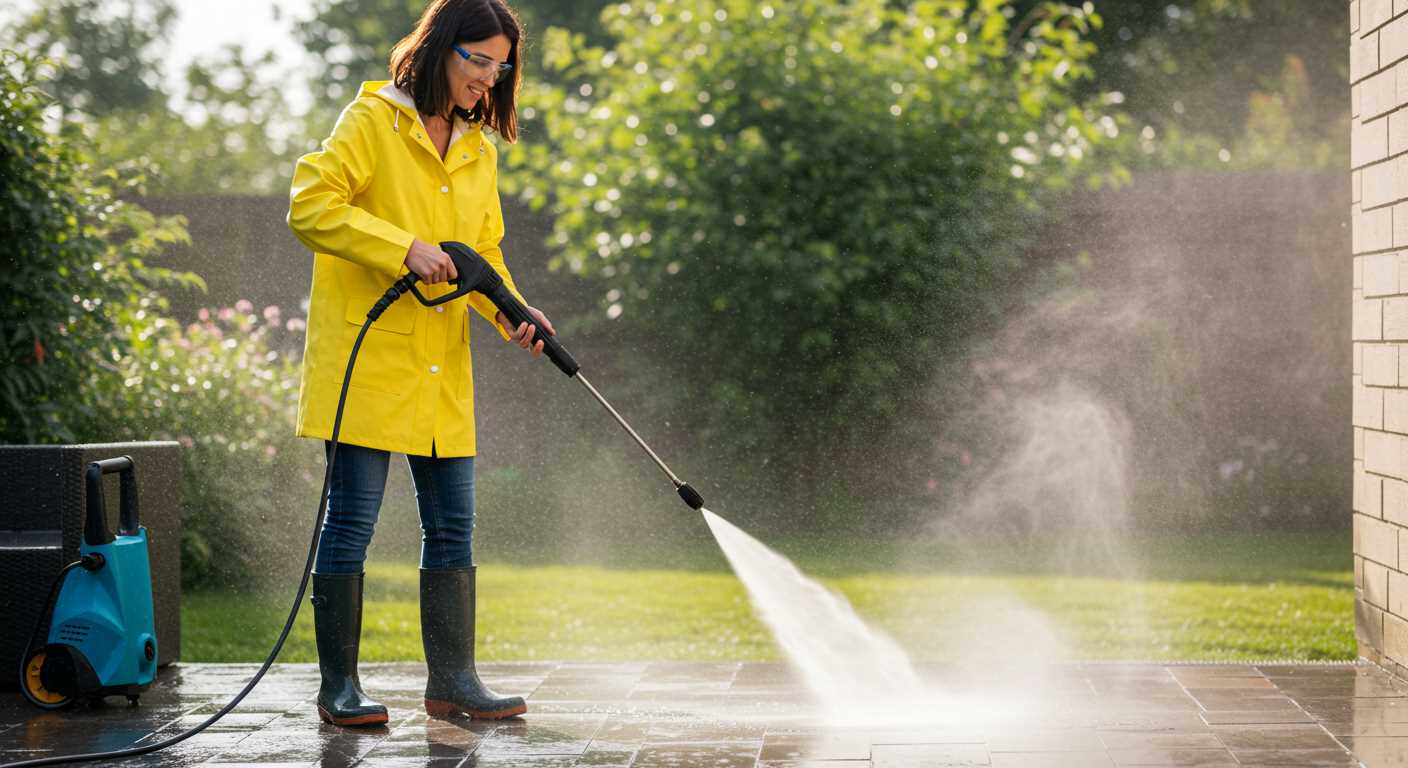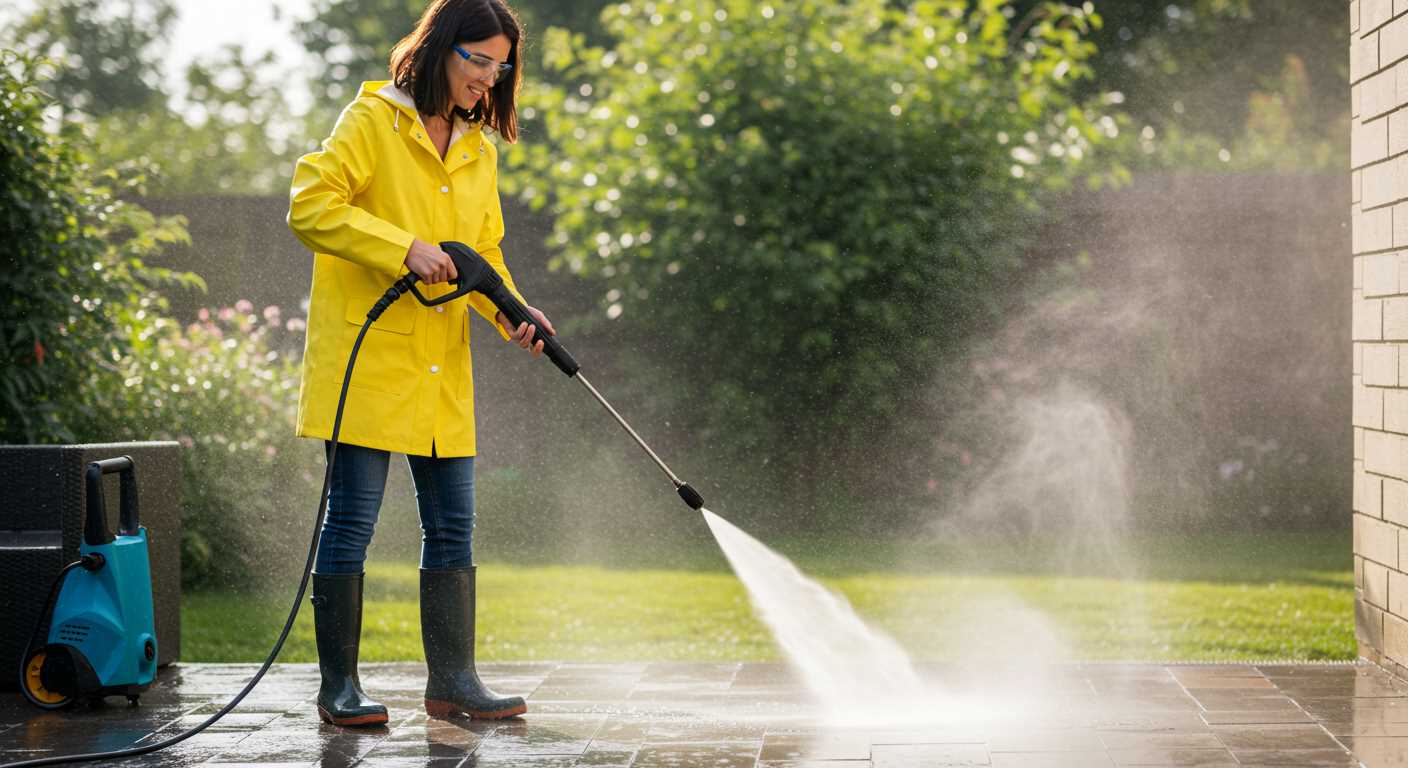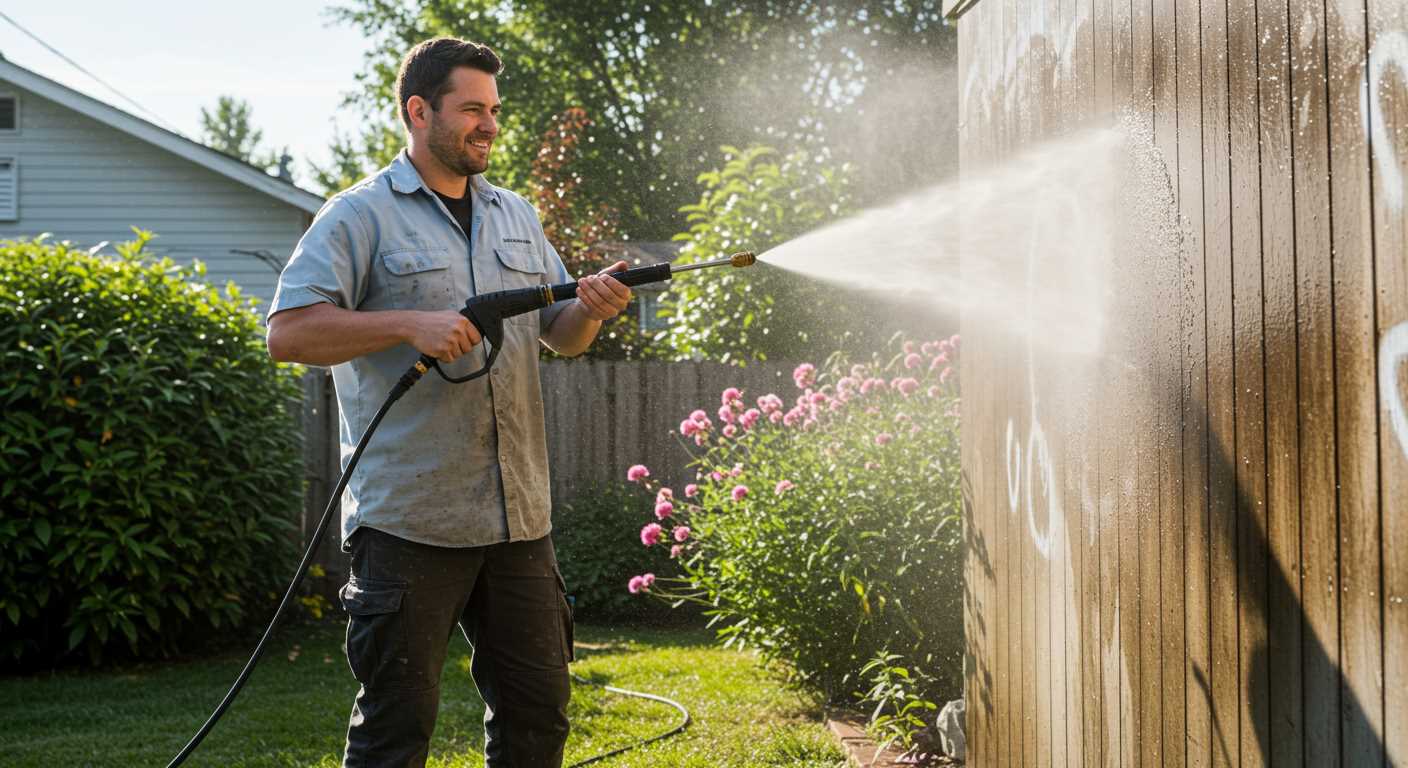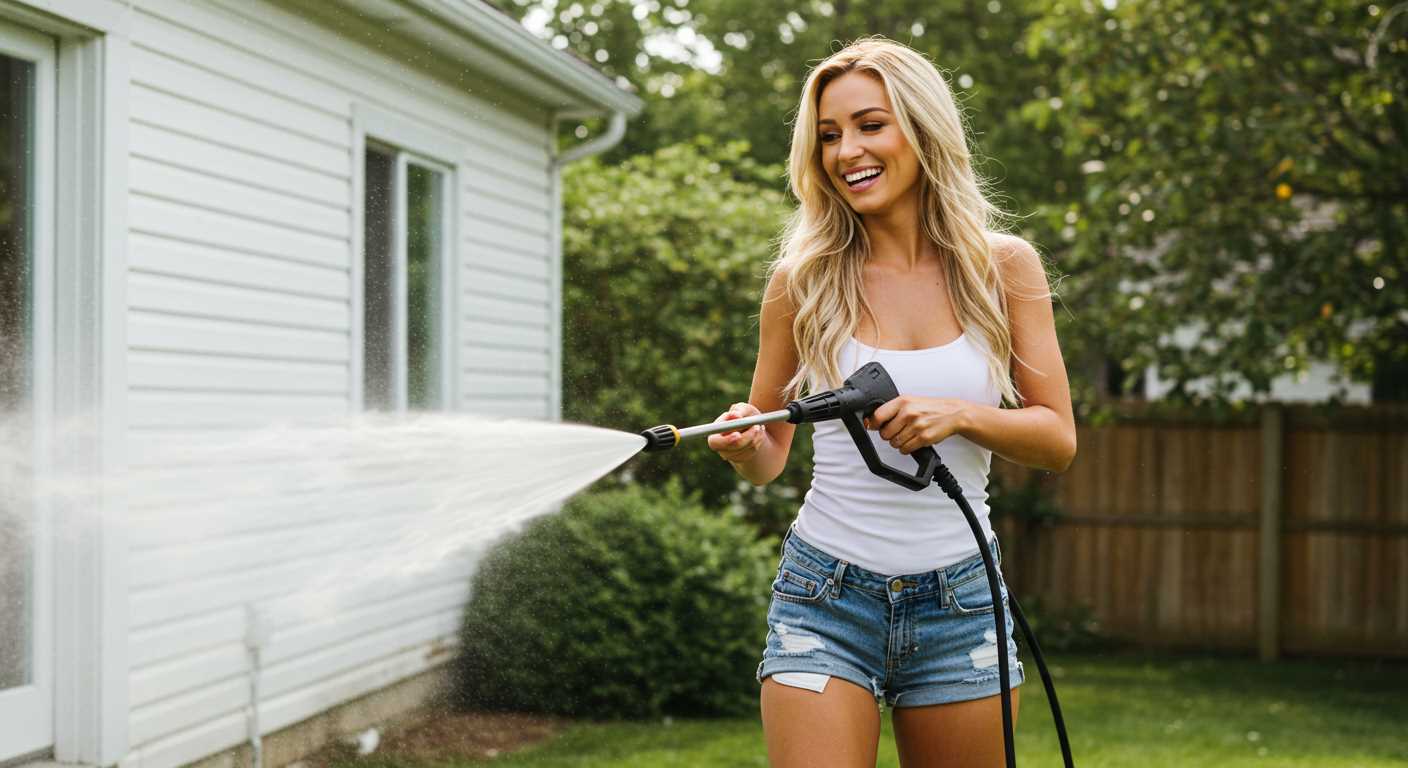


Direct application of a high-pressure cleaning device to clear a blocked lavatory is not advisable. The force generated by such equipment can lead to significant damage to the plumbing system, including cracks or disconnections in pipes. From my extensive experience in the cleaning equipment industry, I’ve seen the consequences of this approach firsthand.
While the intention might be to achieve a quick resolution, the results can often be catastrophic. I recall a case where a colleague attempted this method; the high pressure caused the ceramic bowl to crack, resulting in a costly replacement. Instead, more traditional methods such as using a plunger or a plumbing snake are safer and more effective for resolving such issues.
For those dealing with stubborn clogs, I recommend starting with a plunger, ensuring a proper seal before exerting force. If that fails, a plumbing auger can reach deep into the pipes to dislodge blockages without risking damage. In my years working with various cleaning devices, I’ve learned that sometimes the simplest tools are the most reliable in maintaining the integrity of your plumbing.
Understanding the Mechanics of High-Pressure Cleaning Devices
High-pressure cleaning devices operate on a straightforward principle: they force water through a narrow nozzle at high velocity. This results in a powerful jet capable of dislodging stubborn debris. The mechanics behind this process involve a motor or engine that drives a pump. The pump increases water pressure significantly, often exceeding 100 bar, depending on the model.
One of the standout features of these machines is their adjustable nozzle settings. Different nozzles alter the spray pattern, allowing for precision cleaning. For instance, a wide fan spray is ideal for large surfaces, while a concentrated jet is perfect for tackling tough spots. This versatility is one reason why many people are drawn to these devices for various cleaning tasks.
During my tenure in the cleaning equipment industry, I witnessed countless scenarios where the right nozzle could make or break the cleaning experience. I remember a particular case where a homeowner tried to clear a blockage in their drainage system. They initially used a wide nozzle but switched to a narrower one after realising the former lacked the necessary force. The result was immediate and satisfying, demonstrating how critical nozzle selection is.
The water flow rate also plays a significant role in performance. A higher flow rate means that more water is delivered in less time, thus enhancing cleaning efficiency. However, it’s essential to balance flow rate with pressure to avoid potential damage to delicate surfaces. I once had a client who accidentally damaged their patio by opting for a high flow rate without considering the surface material. That experience reinforced the need for careful attention to detail when operating these machines.
Finally, maintenance is key to ensuring longevity and optimal performance of these tools. Regular checks on hoses, fittings, and the pump itself are necessary to prevent leaks and ensure consistent pressure. I’ve seen many devices fall into disrepair simply due to neglect. A friend of mine learned this lesson the hard way after his unit malfunctioned during an important job, which could have been easily avoided with routine upkeep.
Potential risks of employing a high-pressure cleaning device in plumbing fixtures
Utilising a high-pressure cleaning device in plumbing systems poses significant hazards. The force generated can easily damage porcelain, leading to cracks or breaks that require costly repairs or replacements. I recall a client who attempted this method, resulting in a shattered bowl that was beyond repair. The expense of a new fixture was far greater than the cost of a professional plumber.
Another risk involves the potential for water backflow. High pressure can create a dangerous situation where contaminated water from the plumbing system returns into the home. This not only poses health risks but also can lead to severe plumbing issues. I have witnessed instances where this backflow contaminated clean water supplies, creating a substantial health hazard.
Additionally, improper handling can result in injury. The force can cause loss of control, leading to accidents. I’ve seen colleagues sustain injuries while operating these devices without adequate training or safety measures. Always prioritise safety by wearing appropriate protective gear and ensuring a firm grip on the equipment.
Here’s a summarised table of potential risks:
| Risk | Description |
|---|---|
| Damage to fixtures | High force can crack or break porcelain, leading to replacement costs. |
| Water backflow | Contaminated water may return to the home, posing health risks. |
| Injury | Loss of control can result in accidents; safety gear is essential. |
Always consider the implications before attempting such methods. Opting for traditional unclogging techniques or calling a professional may save time, money, and hassle in the long run.
Step-by-step guide to using a pressure washer safely
Before starting any cleaning task with your high-powered device, ensure you wear protective gear, including goggles and gloves. This prevents potential injuries from debris or splashes.
Preparation
Clear the area around the fixture. Remove any items that could obstruct your movements or become damaged. Check the equipment for any signs of wear or malfunction. If you notice irregularities, such as a pulsing effect, refer to this resource for troubleshooting: why does my pressure washer keep pulsing.
Setting Up
Connect the hose securely to the device and ensure the nozzle is appropriate for the task. Position the hose within easy reach but avoid forcing it into tight spaces. Adjust the water pressure according to the manufacturer’s instructions; lower settings are usually safer for delicate areas.
Always maintain a firm grip on the handle and stand at a safe distance from the nozzle when activating the stream. Start the machine only after confirming that everything is in place. Aim the nozzle at a downward angle to direct the flow effectively.
After completing the cleaning, turn off the equipment and disconnect the water supply. Properly store the device and hoses to prolong their lifespan. This approach not only ensures safety but also enhances the longevity of your cleaning equipment.
Alternative methods for unblocking a toilet
Using a plunger is often the first line of attack. Choose a flange plunger, as it creates a better seal. Ensure there’s enough water in the bowl to cover the rubber part, then push down gently to eliminate air before plunging with force. Repeat this several times until the blockage clears.
If plunging proves ineffective, consider a toilet auger. This device features a flexible metal cable that can navigate through bends in the plumbing. Insert the auger into the bowl, turning the handle clockwise to break up or retrieve the obstruction. Always pull the cable out slowly to avoid making a mess.
An alternative is to create a homemade solution using baking soda and vinegar. Pour a cup of baking soda into the bowl, followed by a cup of vinegar. Allow it to fizz for about 30 minutes, then flush with hot water. This can help dissolve minor clogs caused by organic material.
Hot water can also work wonders. Carefully pour a bucket of hot (not boiling) water directly into the bowl from waist height. The force and heat can help dislodge stuck debris. Always ensure the water isn’t boiling, as this can crack porcelain.
If the blockage is stubborn, chemical drain cleaners are an option. However, use these with caution. Follow the manufacturer’s instructions closely, and wear gloves and goggles for protection. These products can be harsh and potentially damaging to plumbing if used improperly.
For more persistent issues, calling a professional plumber is advisable. They possess the tools and expertise to tackle complex blockages without causing damage to your plumbing system. Sometimes, the problem may be more extensive than what is visible, requiring a thorough inspection.
Signs that indicate a severe blockage
Recognising the signs of a significant obstruction is crucial for timely intervention. One of the first indicators is the slow drainage of water. If the water lingers for longer than usual in the bowl, it suggests an issue further down the line.
Unusual sounds
Strange gurgling noises often accompany a blockage. Such sounds typically emerge when water struggles to flow through the pipes, indicating air trapped within the system. If you notice these noises during flushes or when other fixtures are in use, it’s a warning sign.
Frequent overflow
Another clear signal is repeated overflow. If flushing results in water spilling over the rim, this points to a severe obstruction. It’s essential not to ignore these occurrences, as they can lead to water damage or more significant plumbing issues.
Watch for foul odours emanating from the bowl. An unpleasant smell can indicate stagnant water or decomposing waste, suggesting the blockage is allowing waste to accumulate rather than flow away properly.
If you find that standard clearing methods, like plunging, are ineffective, that’s a strong indication of a more severe blockage. Persistent issues after multiple attempts at clearing should prompt further investigation or the involvement of a professional.
In summary, pay attention to slow drainage, strange sounds, frequent overflow, unpleasant odours, and the ineffectiveness of basic clearing methods. These signs collectively indicate a significant obstruction that requires prompt attention. Ignoring these signals can lead to more extensive and costly repairs down the line.
When to Call a Professional Plumber
Seek the expertise of a plumber without hesitation if multiple fixtures are affected by drainage issues. This often indicates a deeper problem within the plumbing system that requires professional intervention.
If the obstruction persists after trying various methods, it’s wise to reach out for help. Continuous attempts without success can cause further damage to pipes, leading to costly repairs.
Signs of Serious Issues
Look out for unusual gurgling sounds from drains or bubbling in the sink when flushing the lavatory. These signs suggest air trapped in the plumbing system, pointing to a potential blockage further down the line.
Water backing up in different areas of the house also signals the need for a professional. If you notice that water from the sink or bath rises when the lavatory is flushed, it’s a clear indication of a significant problem.
Complex Situations
In cases where the main sewer line is suspected to be compromised, such as frequent backups or foul odours emanating from drains, contact a qualified plumber immediately. Attempting to resolve these issues without proper tools and knowledge can lead to hazardous situations.
Trust your instincts; if something feels off or too complicated, it’s better to bring in a professional who can diagnose and fix the issue safely and effectively.
Maintaining Your Toilet to Prevent Future Blockages
Regular upkeep plays a pivotal role in preventing obstructions in your lavatory. Here are some effective strategies to ensure smooth operation:
- Routine Cleaning: Incorporate a thorough clean of the bowl and the surrounding areas at least once a week. Use appropriate cleaners that dissolve buildup without harming the ceramic.
- Watch What Goes Down: Limit flushing to human waste and toilet paper only. Items like wipes, cotton balls, and dental floss should always be disposed of in the bin.
- Flushing Habits: Avoid multiple flushes for large amounts of waste. A single, forceful flush is more effective and reduces the risk of overflow.
- Inspect for Leaks: Regularly check for leaks around the base and tank. A leaking toilet can lead to sediment buildup that may cause issues.
- Water Level Check: Ensure the water level in the tank is set correctly. Too low can lead to ineffective flushing, while too high can cause overflow.
Implementing these practices not only prolongs the life of your fixture but also minimises the risk of inconvenient clogs. Additionally, consider using enzymatic cleaners monthly to break down organic material and maintain clear pipes.
Personal experience has shown me that neglecting these simple maintenance tasks can lead to bigger problems down the line. One time, a friend of mine faced a severe blockage that could have been avoided with regular cleaning and mindful flushing habits. Don’t let the same fate befall you; stay proactive in your maintenance efforts.
Comparing Cost and Time of Different Unblocking Methods
For those tackling stubborn clogs, weighing the financial and temporal investment of various methods is crucial. Here’s a breakdown of popular techniques.
-
Traditional Plunger:
Cost: Around £10-£20. Time: Typically 5-15 minutes. A plunger is a reliable go-to for minor blockages, requiring minimal investment. It’s effective with quick action, but results may vary based on the severity of the clog.
-
Toilet Auger:
Cost: Approximately £20-£50. Time: 10-30 minutes. An auger offers deeper reach than a plunger, making it suitable for tougher obstructions. The initial cost is slightly higher, but provides more versatility for future issues.
-
Chemical Drain Cleaners:
Cost: Ranges from £5-£30. Time: 30 minutes to several hours, depending on the instructions. While these can be effective, they carry risks to plumbing and the environment. Caution is essential.
-
High-Pressure Equipment:
Cost: £100-£300 for purchasing, or £30-£100 for rentals. Time: 15-60 minutes. Investing in equipment can be costly, but it’s efficient for severe blockages. Regular maintenance can justify the expense over time.
In my experience, the traditional plunger is a solid first step for most scenarios. However, for persistent issues, an auger is often a worthwhile investment. When considering high-pressure gear, ensure you assess the potential for damage and the need for professional guidance. For those interested in enhancing their cleaning arsenal, check out the best chemical for pressure washing vinyl siding.
Ultimately, the choice hinges on the severity of the blockage and your willingness to invest time and resources. Keeping these factors in mind will lead to more effective resolutions.





.jpg)


